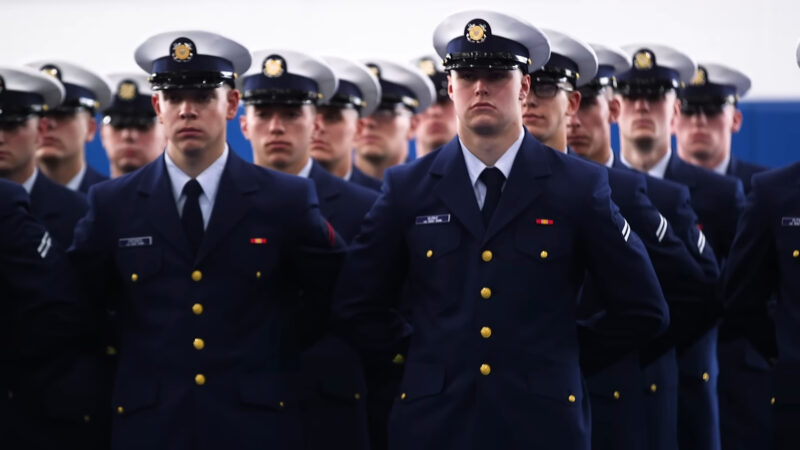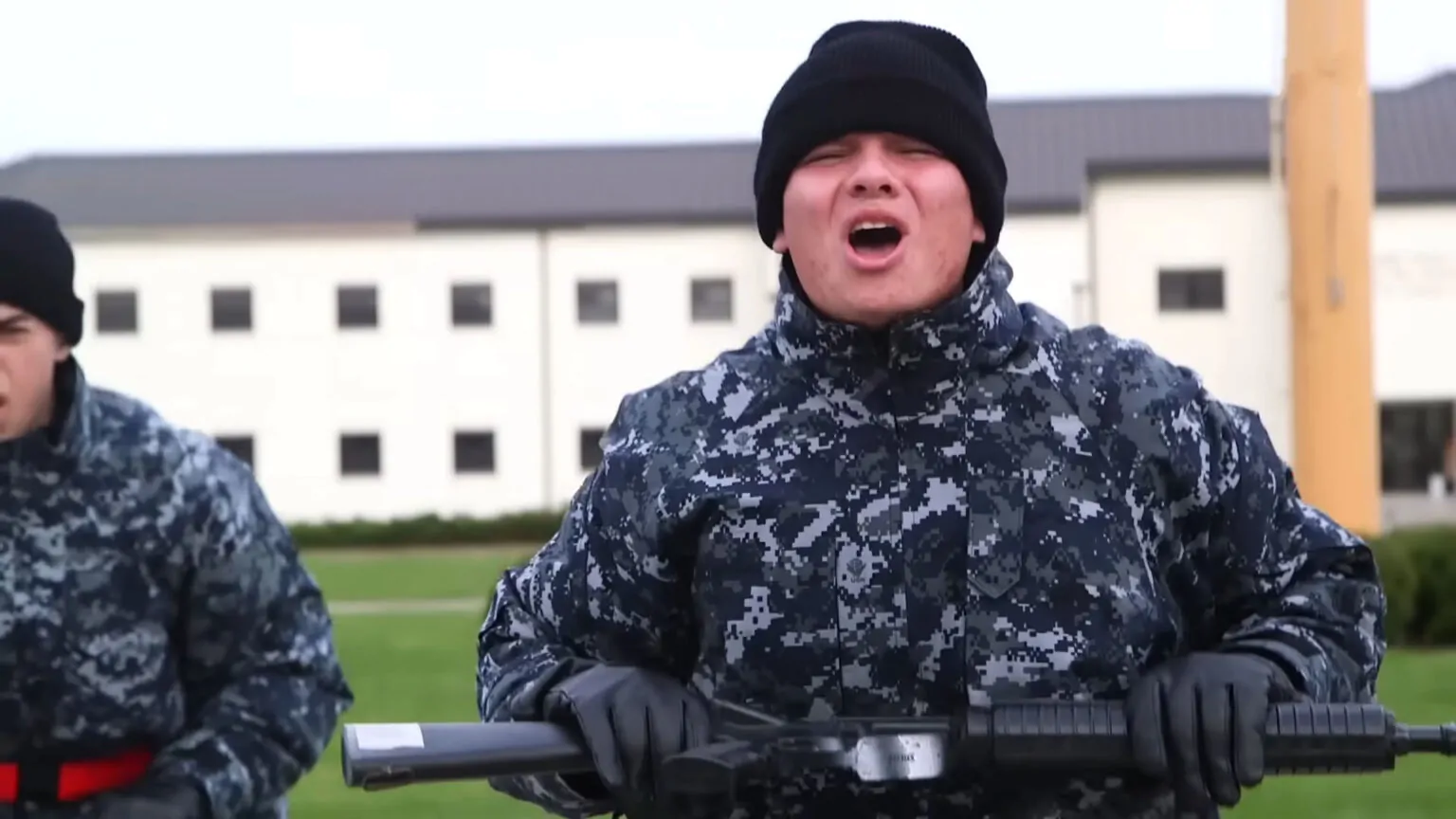Physical fitness is crucial in the Coast Guard, ensuring personnel are ready for the demanding tasks they face.
Coast Guard basic training is rigorous, preparing recruits both mentally and physically for their roles.
The training is essential for building the strength, endurance, and resilience needed to serve effectively.
Let me guide you through all the particularities that can help with fitness requirements for Coast Guard recruits.
Physical Fitness Test (PFT) Requirements for Coast Guard Recruits
The Physical Fitness Test (PFT) is a critical component of Coast Guard basic training, designed to assess recruits’ physical capabilities.
The requirements differ slightly between male and female recruits, ensuring that all recruits meet the necessary fitness standards to perform their duties effectively.
The requirements vary slightly between male and female recruits to account for physiological differences, but the standards are designed to ensure that every recruit can meet the physical demands of Coast Guard service.
Successful completion of the PFT is essential for progressing through basic training, as physical fitness is a key component of the Coast Guard’s operational readiness.
Male Coast Guard Recruits Requirements

Now let us go through the requirements for male Coast Guard recruits:
| Fitness Test | Requirement | Details |
|---|---|---|
| Push-ups | 29 in 60 seconds | Tests upper body strength, particularly chest, shoulders, and triceps. Proper form is critical, with the body kept straight and chest lowered about an inch from the ground. |
| Sit-ups | 38 in 60 seconds | Assesses core strength and endurance. Recruits must raise their upper body to touch the knees with their elbows. |
| 1.5-mile run | 12:51 | Tests cardiovascular endurance. Recruits must complete the run as quickly as possible to demonstrate stamina and aerobic capacity. |
| Sit and reach | 16.50 inches | Measures flexibility in the lower back and hamstrings. Recruits sit with extended legs and reach forward as far as possible. |
| Swim circuit | 5 minutes | Tread water for 5 minutes, jump off a 6-foot platform, and swim 100 meters, testing water survival skills and endurance. |
Female Requirements Coast Guard Recruits

Now that we understand the requirements for males, let us check the female Coast Guard recruit’s requirements.
| Fitness Test | Requirement | Details |
|---|---|---|
| Push-ups | 15 in 60 seconds | Proper form is critical to prevent injuries. |
| Sit-ups | 32 in 60 seconds | Strong core muscles are required, though slightly lower than males. |
| 1.5-mile run | 15:26 | Time reflects average differences in aerobic capacity. |
| Sit and reach | 19.29 inches | Flexibility test requires females to reach slightly farther. |
| Swim circuit | 5 minutes | Tread water for 5 minutes, jump off a 6-foot platform, and swim 100 meters. |
Preparing for the Physical Fitness Test
Early preparation for the PFT is crucial for success in the Coast Guard basic training program.
Prospective Coast Guard recruits are encouraged to begin training well in advance of their reporting date. A well-rounded fitness regimen should include cardiovascular exercises, strength training, and flexibility workouts.
For running, a progressive training program can help improve endurance and speed.
Starting with shorter distances and gradually increasing to the 1.5-mile run can build the necessary stamina. Interval training, which alternates between high-intensity running and recovery periods, can also enhance cardiovascular fitness.
Strength training should focus on exercises that target the major muscle groups used in the PFT.
Push-ups and sit-ups can be practiced regularly to build upper body and core strength. Including exercises such as planks, burpees, and weightlifting can provide additional benefits.
Swimming is another essential component, particularly for the swim circuit. Regular swimming practice, along with treading water exercises, can help Coast Guard recruits build confidence and proficiency in the water.
Flexibility training, including stretching and yoga, can improve performance in the sit-and-reach test and help prevent injuries.
Coast Guard Recruits Physical Fitness Test Details
Each component of the Physical Fitness Test (PFT) is designed to measure specific aspects of physical fitness, and understanding the details of each test can help Coast Guard recruits prepare effectively.
Push-ups
- Chest
- Shoulders
- Tricepsp
Maintaining proper form is essential for maximizing the benefits of push-ups and avoiding injury.
Here are some guidelines for the correct technique:
- Hands should be shoulder-width apart
- The body should form a straight line from head to heels
- Elbows should bend to at least 90 degrees with each repetition
To excel at push-ups, consistency is key. Practice regularly, starting with a manageable number of repetitions while focusing on maintaining perfect form.
Gradually increase the number of push-ups over time, aiming for controlled, quality movements rather than rushing through the set.
Sit-ups
Sit-ups are a classic exercise that primarily evaluates core strength and endurance, focusing on the abdominal muscles.
- Positioning: Begin by lying flat on your back with your knees bent and feet firmly anchored, either by a partner or under a stable object. This setup stabilizes the lower body, allowing for a more effective and controlled movement.
- Hand placement: Place your hands behind your head or cross them over your chest. The position helps maintain consistency with each repetition and prevents the use of momentum to complete the exercise.
- Proper form: As you initiate the sit-up, engage your core muscles and lift your upper body, aiming to touch your elbows to your knees. Lower yourself back down until your shoulder blades touch the ground to complete one repetition.
Consistent practice is key to improving performance in sit-ups. Start by focusing on perfecting your form, ensuring that each repetition is controlled and deliberate.
1.5-mile run
The 1.5-mile run is a standard test used to measure cardiovascular endurance and overall aerobic fitness. It challenges the heart, lungs, and muscles, requiring sustained effort over a moderate distance.
- Start with shorter runs: Begin by running shorter distances, such as half a mile or a mile, at a comfortable pace.
- Progressively increase the distance: Gradually extend your runs as your endurance improves, aiming to reach the full 1.5 miles comfortably.
- Add interval training: Interval training involves alternating between short bursts of high-intensity running and periods of slower jogging or walking.
- Include long, slow-distance runs: Dedicate some training sessions to running longer distances at a slower pace.
Sit and reach
The sit-and-reach test is a common exercise used to assess flexibility, specifically in the lower back, hamstrings, and hip region.
Flexibility in these areas is important for overall physical health, as it helps prevent injuries, improves posture, and enhances movement efficiency.
The test is often used in fitness assessments to determine an individual’s range of motion and flexibility.
Improving flexibility can enhance performance in the sit-and-reach test and other physical activities.
- Include regular stretching exercises: Regularly stretching the muscles that contribute to the sit-and-reach test will gradually improve flexibility.
- Stretch the hamstrings: Try stretches like the standing hamstring stretch or seated forward bend.
- Stretch the lower back: Exercises such as the seated twist and child’s pose can help loosen the muscles in the lower back, allowing for greater forward reach.
- Stretch the hip flexors: Flexibility in the hip flexors can also impact performance.
Swim circuit
The swim circuit is designed to test water survival skills, assessing an individual’s ability to remain calm, controlled, and efficient in the water.
It not only measures physical endurance and swimming capability but also tests mental resilience under challenging conditions.
- Practice treading water: Treading water effectively is a crucial survival skill that allows you to conserve energy while remaining afloat.
- Jumping off a platform: Many swim circuit tests begin with a jump or dive from a platform, simulating situations where entering the water might be sudden or unexpected.
- Swimming 100 meters: The core of the swim circuit is usually a 100-meter swim, requiring both strength and stamina.
To excel in the swim circuit, consistency in training is vital. Regular swimming sessions that emphasize technique, breathing control, and stamina will ensure that you can maintain a steady pace throughout the 100 meters.
Summary
The Physical Fitness Test (PFT) ensures that all Coast Guard recruits possess the strength, endurance, and agility necessary to perform their duties effectively and safely.
To meet these requirements, Coast Guard members must prepare for real-world tasks, including search and rescue missions and emergency response.
By maintaining rigorous fitness standards, the Coast Guard ensures that every recruit is ready to handle the challenges of service, promoting a culture of readiness, resilience, and excellence.
Related Posts:
- What Are the Basic Requirements to Get Into the…
- Joining the Coast Guard Reserve - Requirements and Benefits
- Your Guide to Air Force Reserve Requirements for 2025
- 20 Disqualifying Medical Conditions for Coast Guard Service
- How Coast Guard Salary Is Determined - Rank,…
- How Long Is Coast Guard Boot Camp - The Truth Behind…







